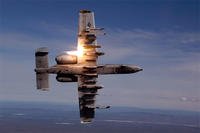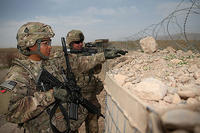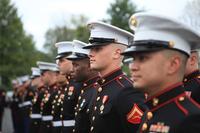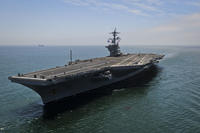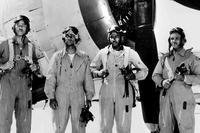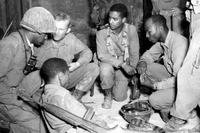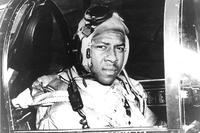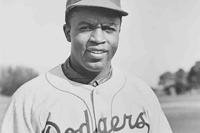The Marquis de Lafayette, the famous Frenchman who joined the American war for independence, called the 1778 Battle of Rhode Island "the best fought action of the war."
It was the first battle where a joint Franco-American force fought against the British. Although the British would occupy Rhode Island for a year afterward, Americans held off the British long enough so they could make an orderly retreat and fight another day.
A critical component to the Americans' successful withdrawal was the 1st Rhode Island Regiment. The 1st was a unit of mostly Black soldiers, with American Indian troops and White colonists, all fighting alongside one another.
British troops had occupied Rhode Island since fighting began in 1776, but with the French fleet on the way, the crown was forced to withdraw from Philadelphia and bolster its defenses elsewhere. Much of the occupying force went to New York, but British Gen. Sir Henry Clinton sent 2,000 men across Long Island Sound into Rhode Island.
As the French entered North American waters, Gen. George Washington ordered Maj. Gen. John Sullivan to make an attack on Newport, Rhode Island, to dislodge the British and send those troops back to New York. Despite calling up more than half of its militia, Rhode Island was still having trouble meeting troop quotas set by the Continental Congress.
The Rhode Island Assembly decided to free 88 slaves and allow them to enlist in 1778. For months, the 1st Rhode Island Regiment recruited formerly enslaved Black men to serve in its militia force. When all was said and done, more than half of the 1st Rhode Island was made up of Black men in uniform. It was the first integrated military unit to fight for the United States.
When it came time to make an attack on Newport, the 1st Rhode Island Regiment was positioned along the west main road leading to the town. Before the battle could begin, on Aug. 10, 1778, a storm hit the French fleet in Newport Harbor, battering it for two full days before it cleared. The French were forced to leave for Boston for repairs, leaving the Patriot militias to attack the professional soldiers of the British occupation force.

Sullivan and his militiamen were forced to withdraw from the attack on Aug. 28, after laying siege to the city for two days. The 1st Rhode Island was to cover the army's withdrawal in the west. Hessian Gen. Friedrich Wilhelm von Lossberg led a force of German mercenaries along the western road.
Under cannon fire from British ships off the coast, the 1st Rhode Islanders fought off three major Hessian assaults, inflicting such heavy losses on the Hessians each time that von Lossberg was hesitant to make a fourth attempt. As the Hessians struggled to regroup, the Americans made a counterattack, which was also fought back.
In the Battle of Rhode Island, the British force took 260 casualties, almost half of those were Hessians assaulting the 1st Rhode Island Regiment. Sullivan's army survived and went on the offensive against Britain's Iroquois allies in New York.
As an integrated unit, the 1st next saw real action at Pines Bridge, near Yorktown, New York, in 1781. The British overran the bridge, killing the unit's officers and 20 of its men. It also participated in the Siege of Yorktown that signaled the eventual end of the American Revolution.
The Black soldiers of the 1st Rhode Island Regiment were granted their freedom when their enlistments ended with the end of the war.
-- Blake Stilwell can be reached at blake.stilwell@military.com. He can also be found on Twitter @blakestilwell or on Facebook.
Want to Learn More About Military Life?
Whether you're thinking of joining the military, looking for post-military careers or keeping up with military life and benefits, Military.com has you covered. Subscribe to Military.com to have military news, updates and resources delivered directly to your inbox.






